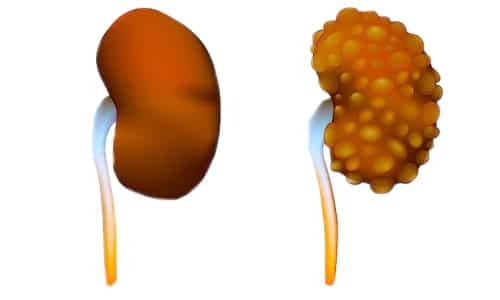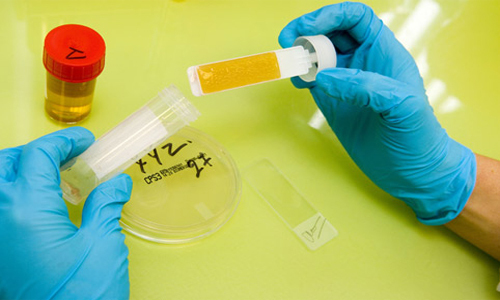In some internal organs, for reasons that are not clear, the growth of epithelial cells suddenly starts to accelerate, resulting in the formation of many small cysts. By what mechanism such a process occurs, it is still not clear, but this unpredictable anomaly is considered very dangerous. One of such rare pathologies is multicystosis of the kidney. This pathology is classified as unpredictable, because it is difficult for specialists to predict the dynamics of its development and to determine the possible consequences of the pathological process.

General picture of multicystic dysplasia
When healthy tissues begin to be replaced by a multitude of cystic neoplasms and the organ stops performing its functions to the full, multicystosis of the kidney is diagnosed. The volume of the organ affected by the pathology can only increase by a few centimeters, and can reach the largest size, occupying half of the abdominal cavity.
Warning! If multicystosis has affected both kidneys, the chances of surviving in the patient are almost nonexistent. But if healthy tissues are left in the affected organs, capable of reprocessing blood, there remains a small hope for the removal of cysts in an operative way.
Multi-cystic formations come in several categories:
- category I represents benign cysts easily diagnosed with ultrasound;
- II category consists of benign cystic formations that have any inclusions and are of calcified, infected or hyperdense type;
- Cysts of category III are characterized by a tendency to malignancy, which is manifested by a noticeable thickening of their membranes and membranes. Such neoplasms are very difficult to detect by X-rays and need urgent surgery.
In general, multicystic formation is a fairly thin-walled cysts filled with fluid. They contribute to their appearance of a disturbance of the urinary flow in one of the renal canals, as a result of which it expands and a cyst is formed. Gradually, the lumen of the ureter becomes narrower, it can close completely. As a result, the kidney becomes so bumpy and large that it is easily palpable through the wall of the peritoneum.
Possible manifestations of renal multicystosis
Renal multicystosis may not manifest itself for quite a long time, especially if the affected organ has no inflammatory processes. If such a complication begins to develop, the patient observes such signs:
- Elevated temperature;
- Stupid pain in the lumbar region.
Against the backdrop of such symptoms, there are absolutely no abnormalities in laboratory urine tests. Then the pathological process can be detected only by angiographic or ultrasound examination. But if the cystic formations begin to exert pressure on the urinary tracts or surrounding tissues, the patient experiences the following symptoms:
- A constant thirst, the amount of urine released increases significantly, a small amount of blood can appear in the urine, pressure rises;
- In the area of the affected organ is constantly localized aching painful syndrome of a stupid character;
- If pathology is complicated by infectious processes, then the symptomatology of pyelonephritis, fever, frequent urination accompanied by cuts and severe weakness are attached to the general clinical picture;
- If the cysts are greatly expanded, they squeeze the blood vessels, which further contributes to renal atrophy;
In general, patients with unilateral multicystosis of the kidney are highly viable, but only if the second kidney works without deviations. If the cystic formation is broken or inflamed, the symptoms of inflammation begin to manifest, accompanied by a severe pain syndrome.
Warning! If suppuration or rupture of the cysts occurs, emergency surgery is indicated.
How the pathology and methods of its diagnosis develop
Renal multicystosis is considered a congenital disease. Such cystic enlargement is formed due to failures of genetic origin, as a result of which the kidney tissues are formed incorrectly. Today, such a pathology can be detected even during pregnancy during the ultrasound. This pathology is considered quite rare. Sometimes renal anomalies are not visualized even by ultrasound, then pathology is an accidental finding after birth, and even in adulthood. And in adults, pathology can also come to light accidentally with ultrasound. Usually, in such a situation, there is an excessive decrease in the size of one of the kidneys, or the absence of one of the organs.
Important! Due to the rarity of renal multicystosis, its causes have not been sufficiently studied, but a certain tendency has been established for this pathological process in boys. They have multicystic dysplasia is detected three times more often.
If multicystosis develops in one organ, then it is unlikely to affect another kidney, and it will work normally. Usually after birth, with a favorable course of the pathological process, a multicystic kidney works and produces urine. But the difficulty arises in the fact that the urine has nowhere to exit from the affected kidney and it accumulates inside, increasing the organ. Over time, the affected kidney stops functioning and wrinkles. Most often such a favorable outcome is observed. But there are some complications that can be corrected only with the help of a surgical operation. To such complications carry:
- Cystic suppuration, provoking development of inflammatory processes, ruptures and purulent processes like peritonitis;
- An enlarged kidney squeezes the vital organs, which causes a corresponding clinical picture;
- In very rare cases, there is persistent hypertension, not amenable to drug adjustment.
The main diagnostic technique is ultrasound, which is used to detect the number of cysts, their size and localization, their location relative to nearby organs and other indicators. Sometimes resort to additional studies such as angiography or contrast urography.
Basics of therapy
Treatment is largely determined by the complexity of a particular case. If the number of such formations is insignificant, then a puncture is indicated, suggesting pumping out cystic contents. If the multicystosis continues to progress, then a nephrectomy or removal of the affected kidney is performed. Such an operation allows avoiding compression of nearby systems or organs, leading to various complications.
Nephrectomy is performed with general anesthesia. The procedure for removing the multicystic kidney can be performed in two ways:
- Laparoscopic removal;
- Open nephrectomy.
Laparoscopic nephrectomy is performed through several point punctures required for the introduction of specialized equipment. In addition to the affected kidney, the renal leg( vessels and ureter) is also removed. According to technical complexity, laparoscopic nephrectomy is considered more difficult than surgical intervention by the open method.
Warning! After removal of the multi-cystic kidney, it is important for patients to follow preventive conditions, in order to avoid infectious processes in the urinary system. It is necessary to avoid hypothermia and sexual infections transmitted through sexual contact.
Open nephrectomy is performed through a large incision, after removal of the multicystic kidney all layers are sewn up. Postoperative period involves the appointment of strong pain medications. In addition, during the month it is recommended to wear a special bandage and strict restriction of physical activity. According to statistics, after removal of the affected kidney, patients continue to live a normal life, forgetting about the disease forever. As for bilateral multicystosis, unfortunately, the forecast is mostly unfavorable. But this form is very rare.



